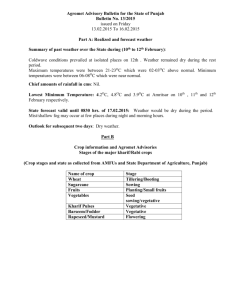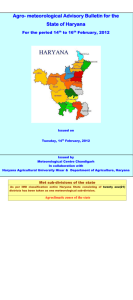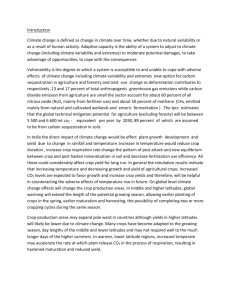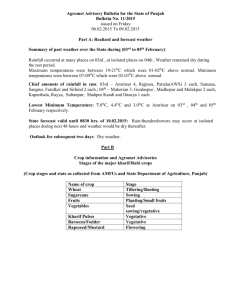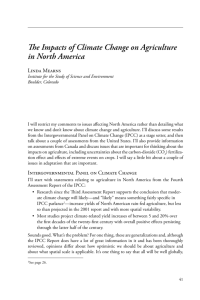Abstract example - International Society of Sugar Cane
advertisement
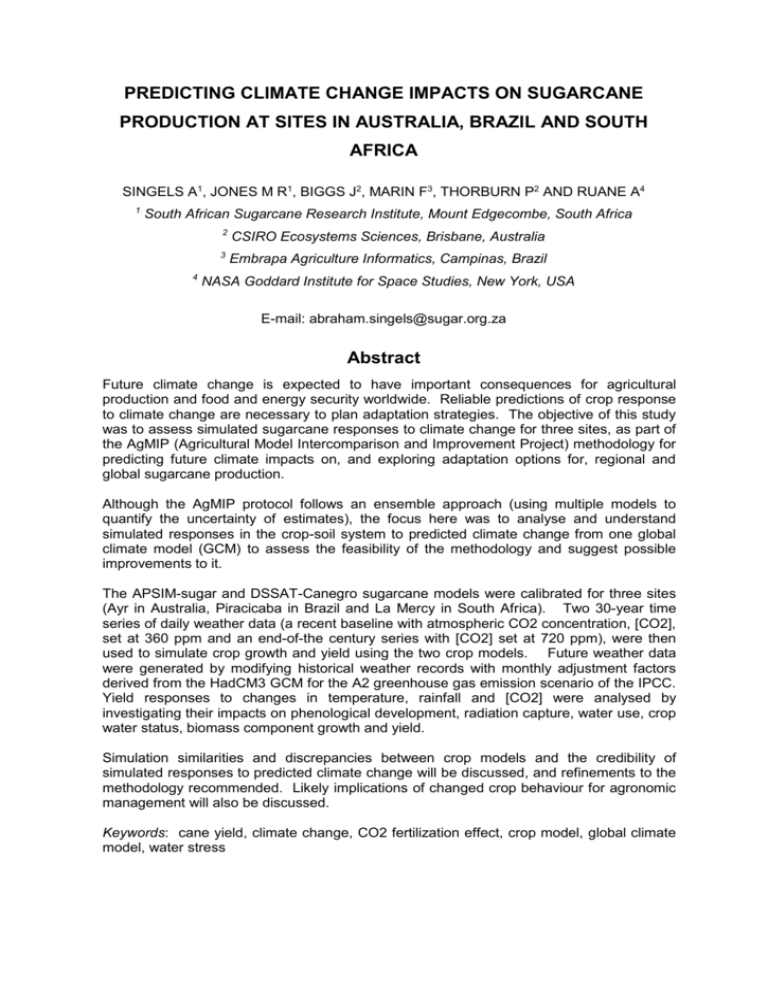
PREDICTING CLIMATE CHANGE IMPACTS ON SUGARCANE PRODUCTION AT SITES IN AUSTRALIA, BRAZIL AND SOUTH AFRICA SINGELS A1, JONES M R1, BIGGS J2, MARIN F3, THORBURN P2 AND RUANE A4 1 South African Sugarcane Research Institute, Mount Edgecombe, South Africa 4 2 CSIRO Ecosystems Sciences, Brisbane, Australia 3 Embrapa Agriculture Informatics, Campinas, Brazil NASA Goddard Institute for Space Studies, New York, USA E-mail: abraham.singels@sugar.org.za Abstract Future climate change is expected to have important consequences for agricultural production and food and energy security worldwide. Reliable predictions of crop response to climate change are necessary to plan adaptation strategies. The objective of this study was to assess simulated sugarcane responses to climate change for three sites, as part of the AgMIP (Agricultural Model Intercomparison and Improvement Project) methodology for predicting future climate impacts on, and exploring adaptation options for, regional and global sugarcane production. Although the AgMIP protocol follows an ensemble approach (using multiple models to quantify the uncertainty of estimates), the focus here was to analyse and understand simulated responses in the crop-soil system to predicted climate change from one global climate model (GCM) to assess the feasibility of the methodology and suggest possible improvements to it. The APSIM-sugar and DSSAT-Canegro sugarcane models were calibrated for three sites (Ayr in Australia, Piracicaba in Brazil and La Mercy in South Africa). Two 30-year time series of daily weather data (a recent baseline with atmospheric CO2 concentration, [CO2], set at 360 ppm and an end-of-the century series with [CO2] set at 720 ppm), were then used to simulate crop growth and yield using the two crop models. Future weather data were generated by modifying historical weather records with monthly adjustment factors derived from the HadCM3 GCM for the A2 greenhouse gas emission scenario of the IPCC. Yield responses to changes in temperature, rainfall and [CO2] were analysed by investigating their impacts on phenological development, radiation capture, water use, crop water status, biomass component growth and yield. Simulation similarities and discrepancies between crop models and the credibility of simulated responses to predicted climate change will be discussed, and refinements to the methodology recommended. Likely implications of changed crop behaviour for agronomic management will also be discussed. Keywords: cane yield, climate change, CO2 fertilization effect, crop model, global climate model, water stress


